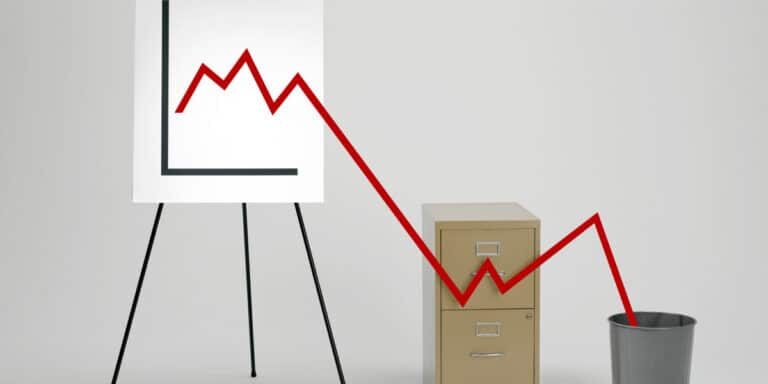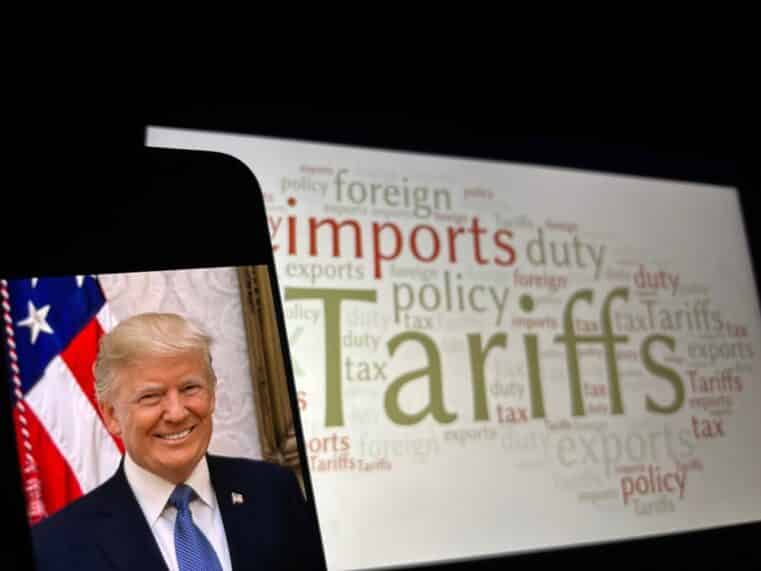
US Bankruptcies Rise as Credit Cycle Ends
A disturbing trend in rising commercial and consumer bankruptcies has begun as the credit cycle comes to a close
Easy money comes with opportunities and risks. Unfortunately, when the benefits of easy money are immediate and risks deferrable, it’s easy to forget about the latter. Borrowers tend to become infected with a sense of financial myopia heightened by a debilitating form of recency bias--you see only what’s in front of you and project the most recent past into the future.
The problem with this perspective is that it completely distorts economic reality. Many businesses end up overextending their capital resources or making malinvestments that, over time, turn into economic losses. Consumers, tempted by low interest rates and an optimistic economic outlook rack up on credit card debt, making purchases that far exceed what they can afford.
As always, the bill comes due. And everyone, businesses and consumers alike, are suddenly struck with a nauseating moment of clarity, seeing that they had been dancing on the edge of a financial cliff all along, though blinded by the fog of their own optimism and denial.
Total commercial bankruptcy filings in June 2017 up 16%followed by an increase in non-commercial bankruptcy filings
According to the American Bankruptcy Institute, total commercial bankruptcies increased to 3,385 filings in June 2017 from the 3,338 registered in June 2016. This figure is 39% higher than in June 2015 and 18% higher than June 2014. Non-commercial bankruptcies increased to 63,372 from June 2016’s 63,000 filings.
The projections are ominous. According to Samuel Gerdano, ABI’s Executive Director, due to the “economic challenges weighing on the balance sheets of struggling consumers and companies,” Gerdano estimates that “total bankruptcies for 2017 will likely approach 800,000.”
To give you a better picture of what’s happening, note the year-over-year uptrend in commercial bankruptcy filings and the three-month moving average of consumer bankruptcy filings (wolfstreet.com).

US credit card debt is at an all-time high--Topping $1 TRILLION.
It’s a well publicized fact, albeit one that may have gone mostly unnoticed, that US credit card debt is currently at its highest levels since the Great Recession. According to the Wall Street Journal, consumers are borrowing and spending more on big-ticket items, which is generally considered a “positive” sign for the economy. A positive sign for the economy? When are Americans going to wake up to the fact that the true measure of economic well-being is real wealth production and not consumption spurred on by debt--a notion that the government and the Fed are only too happy to promote?
Auto loans and student loans (the latter now at $1,4 trillion) have both crept into the levels of credit card debt territory. Both are contributing factors that lead toward bankruptcy filings. Aside from these debts, the cost of living alone has become increasingly burdensome. With rising healthcare costs and housing costs, on top of that...wages stagnating or declining, it won’t take much to push American households over the edge.
As a result, many American households are collapsing under the weight of their own debt. Factor in collapsing businesses, and some Americans will be facing a double whammy.
Bear in mind that 99% of employing organizations are small businesses, employing 53% of the US workforce.
Where will you be when the end of this credit cycle comes to a full stop and the consequences come crashing down? Will you be counted as one of its victims, or will you be one of the fortunate ones left standing? Don’t believe the hype spun by the government or the Fed regarding the health of our economy, something we covered in last week’s post. Robust economic health comes from producing real wealth (not spending borrowed money), saving, and investing in assets with real value.
GSI Exchange is pleased to bring our 75 years of market expertise to work for you in our exclusive brochures; The Silver Action Plan, The Power of Gold, Precious Metals IRA Guide and the US Bank Expose, all of which are free of charge and available to download immediately when you click here.














